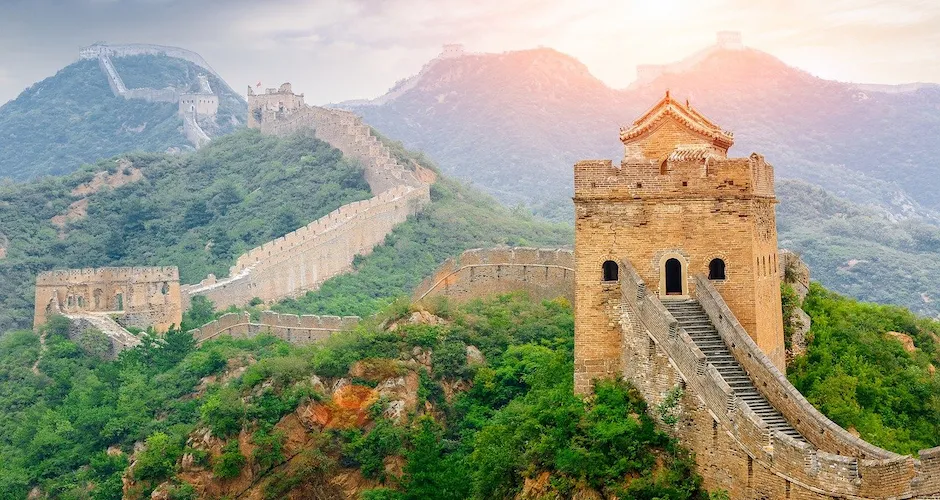The Building of the Great Wall of China: Myths and Realities
June 3, 2024
History Architecture

The Great Wall of China is one of the most iconic and impressive structures in the world, stretching over 13,000 miles across northern China. Built over several dynasties, it stands as a testament to the ingenuity and determination of the Chinese people. However, the history of the Great Wall is often shrouded in myths and misconceptions. This blog explores both the myths and the realities behind the construction of this monumental structure.
The Myths of the Great Wall
Myth 1: The Great Wall Can Be Seen from Space
One of the most persistent myths about the Great Wall of China is that it is visible from space with the naked eye. This claim has been debunked by astronauts and scientists. While the Wall is incredibly long, it is not particularly wide or distinct enough to be seen from space without aid.
Myth 2: The Wall Was Built All at Once
Another common misconception is that the Great Wall was built as a single, continuous project. In reality, the Wall was constructed in sections by different dynasties over more than 2,000 years. These sections were later connected and extended to form the structure we know today.
Myth 3: The Wall Was Only Built to Keep Out Invaders
While the primary purpose of the Great Wall was indeed defensive, it also served other important functions. It acted as a means of controlling immigration and emigration, facilitated trade, and helped to regulate and encourage commerce along the Silk Road. The Wall also served as a way to demonstrate the power and resources of the Chinese empire.
Myth 4: The Wall Was Built Solely by Forced Labor
The idea that the Great Wall was built entirely by forced labor is another myth. While it is true that prisoners and conscripted laborers were used in its construction, many sections were also built by soldiers, peasants, and skilled craftsmen. The work was arduous and often dangerous, but it involved a wide range of people contributing to its construction.
The Realities of the Great Wall
The Origins of the Wall
The origins of the Great Wall can be traced back to the 7th century BC during the Warring States period. Individual states built walls to defend their territories from invasions by rival states and nomadic tribes. The first emperor of China, Qin Shi Huang, who founded the Qin Dynasty, is credited with initiating the first unification of these walls around 221 BC. His efforts laid the foundation for what would become the Great Wall.
Construction Techniques
The techniques and materials used in constructing the Great Wall varied depending on the region and the dynasty. Early walls were made from compacted earth and wood. During the Ming Dynasty (1368-1644), which is responsible for the most well-known sections of the Wall, bricks, and stones were used extensively. Workers employed a variety of techniques, including rammed earth, tamped earth, and masonry, depending on the available resources and terrain.
The Role of the Ming Dynasty
The Ming Dynasty played a crucial role in the construction of the Great Wall as we know it today. After suffering significant invasions by the Mongols, the Ming emperors embarked on an extensive building project to strengthen and expand the Wall. This period saw the construction of watchtowers, fortresses, and garrison stations, transforming the Wall into a formidable military defense system.
The Workforce
The workforce that built the Great Wall was diverse. It included soldiers who were stationed along the Wall, peasants who were conscripted for labor, and skilled artisans and engineers. Despite the harsh conditions and significant loss of life during construction, the Wall was a collaborative effort involving many segments of Chinese society.
The Wall's Effectiveness
While the Great Wall was not impenetrable, it was highly effective in many ways. It slowed down invaders, allowing the Chinese military to mobilize and respond to threats. The Wall also served as a psychological barrier, symbolizing the strength and determination of the Chinese empire. Additionally, it played a crucial role in controlling the movement of people and goods, contributing to the stability and prosperity of the region.
Modern Significance
Today, the Great Wall of China is a UNESCO World Heritage Site and one of the most visited tourist attractions in the world. It stands as a symbol of Chinese cultural heritage and a testament to human ingenuity and perseverance. The Wall continues to be a subject of study and admiration, revealing insights into the engineering, military strategy, and history of ancient China.
Conclusion
The Great Wall of China is a marvel of engineering and a monumental achievement in human history. While many myths surround its construction, the reality is even more impressive. Built over centuries by various dynasties using a wide range of techniques and materials, the Wall served multiple purposes beyond mere defense. It is a symbol of the enduring spirit and resilience of the Chinese people.
By understanding the myths and realities of the Great Wall, we can better appreciate its significance and the remarkable efforts that went into its creation. The Wall is not just a relic of the past; it is a living monument that continues to inspire and captivate people around the world.